On the weekend of 29 February and 1 March, 2020, Major League Soccer turned 25.
To much fanfare and celebration, Nashville SC and Inter Miami took to the field, in doing so becoming the 25th and 26th teams in Major League Soccer.
Expansion has been the buzzword at MLS, the league having had 16 teams at the start of the last decade.
By 2022 there will be 30 teams, which (for now) will be the limit, despite continued interest from the likes of Las Vegas, where NFL American football will later this year join NHL ice hockey in Sin City, Phoenix and Detroit.
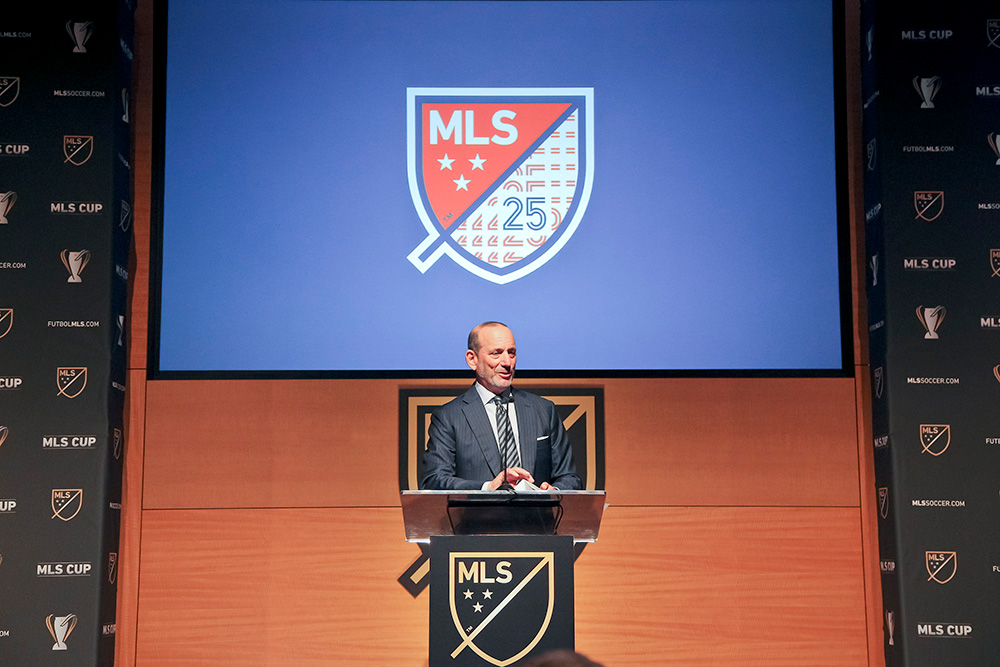
Don Garber, MLS commissioner since 1999
If a measure of an organisation’s success is that people are eager to join, MLS is clearly winning the battle.
“There is no lack of interest in terms of potential owners for MLS expansion,” Mark Abbott, president and deputy commissioner of MLS, tells Sportcal Insight.
Abbott is MLS employee number one, having come on board in 1993 when the league was officially established – one of the conditions handed down by Fifa for awarding USA the 1994 World Cup.
Abbott was the principal author of the league’s business plan, playing a primary role in creating its structure and negotiating with the initial investor-operator group.
It is the appetite of that investor base that has arguably enabled MLS to flourish.
Indeed, if it was not for a small number of people, most notably the billionaire Philip Anschutz, MLS would not have reached adolescence let alone its mid-20s.
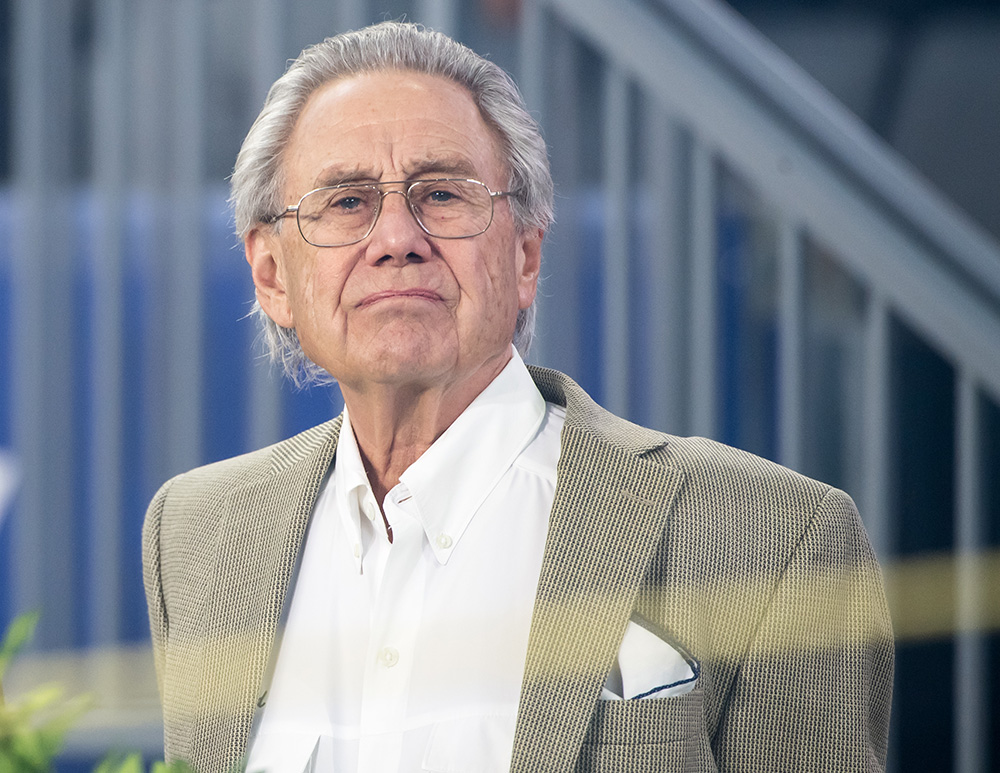
Early investors like Philip Anschutz kept MLS afloat in the tough early years
In late 2000, league officials led by commissioner Don Garber, who had only been in the post a year, convened at the Colorado ranch of Anschutz, at the time owner of three of the 12 MLS franchises (he eventually went on to own six, but now just controls LA Galaxy).
There was one item on the agenda: cull or keep.
Those at that meeting have later come to refer to Anschutz as the ‘saviour of MLS.’
Garber told the New York Times in an interview in August 2019: “I think Phil thought the cost of operating the teams for one more year was worth less than the opportunity of selling the teams. And he was right, because he sold all those teams for a profit.”
Speaking from MLS headquarters in the heart of Manhattan, where the league now employs some 700 staff, Abbott reflects: “That was a very challenging period. There were very serious discussions about what needed to be done to take the league forward. We had three families investing at the time and thankfully they decided to continue to make that commitment.”
Fast forward to 2020 and there are 30 different owners of the 30 current and future teams, an investor list that Sunil Gulati, deputy commissioner of MLS until 1999, refers to as a “who’s who of the sports, entertainment and business world.”
The man tasked with selling the franchises in the early days was MLS founder Alan Rothenberg, head of the 1994 World Cup organising committee and president of US Soccer during that decade.
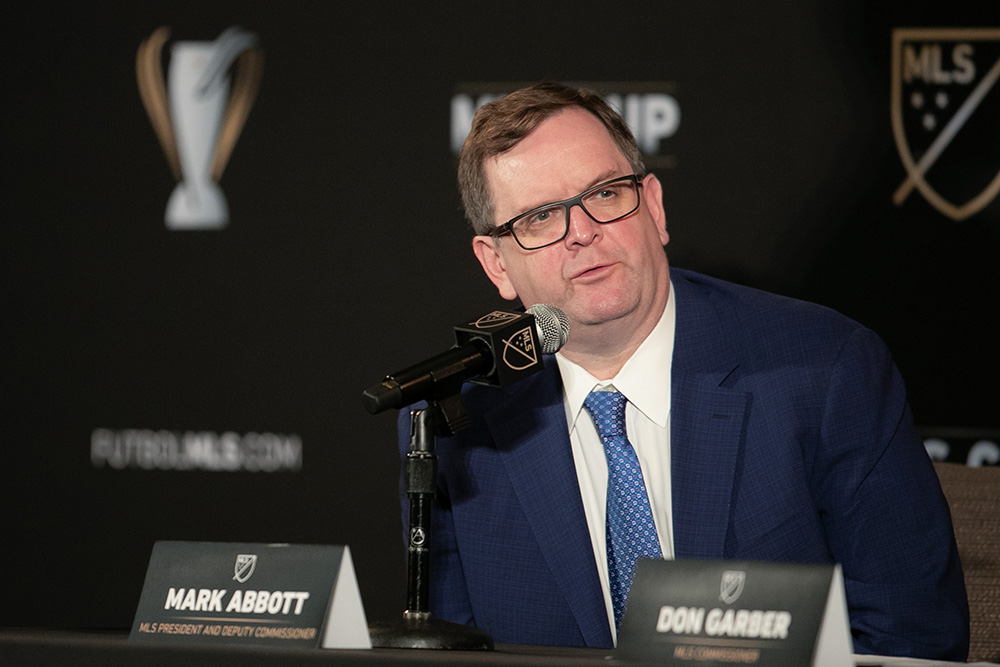
MLS employee Number 1: President and deputy commissioner Mark Abbott
Echoing Abbott’s early memories, he tells Sportcal Insight: “The timing was good to launch, the vision was good, but the first few years were tough. When we started, we were running around trying to find owners. How you react is the challenge. Why MLS survived was the considerable commitment from a dedicated small number of early investors and the vision of Don Garber.”
A key component of that vision was to enforce the construction of soccer-specific stadia.
Rothenberg, modestly, hails Garber for carrying out the initiative, but Gulati, also a former US Soccer president, is quick to highlight his former boss’ influence.
“Alan Rothenberg should get a great deal of credit for his desire for the league to have soccer specific stadia. Investors initially did not want take on such risks,” he says.
“But he knew that watching a game in a big NFL stadium with a small crowd is a turn off. Watching a game in a small stadium that is packed with passionate spectators is what you want if you are looking to engage and grow a fanbase.
“Now some of our stadia are among the best in the world.”
The draft business plan put together by Rothenberg and Abbott did include the requirement for teams to play in smaller, soccer venues, rather than share giant NFL stadia.
But there was little enthusiasm, Rothenberg remembers.
“If you dropped down [from NFL stadia] at that time, you were talking about junior college and high school stadiums. As we took the business plan to more and more investors, they said ‘jeez, soccer has been unsuccessful. It has been tried several times at a professional level and failed’.
“Starting any league is a daunting challenge, then you add in the prospect of investing multi-millions of dollars in stadiums that could become a white elephant. So we withdrew it from the draft plan to investors.”
“As recent as 2014, Arthur Blank paid $70 million for the franchise in Atlanta, which took to the field in 2017 and has been a worldwide sensation, regularly attracting crowds of over 70,000 at the Mercedes-Benz Stadium.”
Undeterred, Rothenberg showed the draft plan to Lamar Hunt, owner of Columbus Crew.
Hunt promptly financed the construction of the Columbus Crew Stadium, the first soccer-specific venue in MLS. While Columbus played in one of the league’s smallest markets, it soon began to generate the highest attendances.
That gave Anschutz the confidence to build the Home Depot Arena (now Dignity Health Sports Park) in Los Angeles in 2003 and in turn Garber the confidence to insist that any expansion team had to build, or have the firm commitment to build, a soccer-specific stadium.
Now there are 20 such facilities with seven more construction projects on the go, including in Columbus where the Crew are to open a new home in 2021.
The Crew’s journey is a reflection of the commercial success of MLS, according to Dan Courtemanche, the league’s executive vice-president of communications.
He tells Sportcal Insight: “In 1999 they opened a facility that cost $33 million. Now the new one is costing more than $300 million. That alone shows you how far the league has come.”
The growth in stadium value is mirrored by the rising cost of an expansion team.
In December 2019, David Tepper, owner of the NFL’s Carolina Panthers, landed the 30th MLS franchise, with Charlotte to debut in 2021.
The fee: $325 million.
As recent as 2014, Arthur Blank paid $70 million for the franchise in Atlanta, which took to the field in 2017 and has been a worldwide sensation, regularly attracting crowds of over 70,000 at the Mercedes-Benz Stadium.
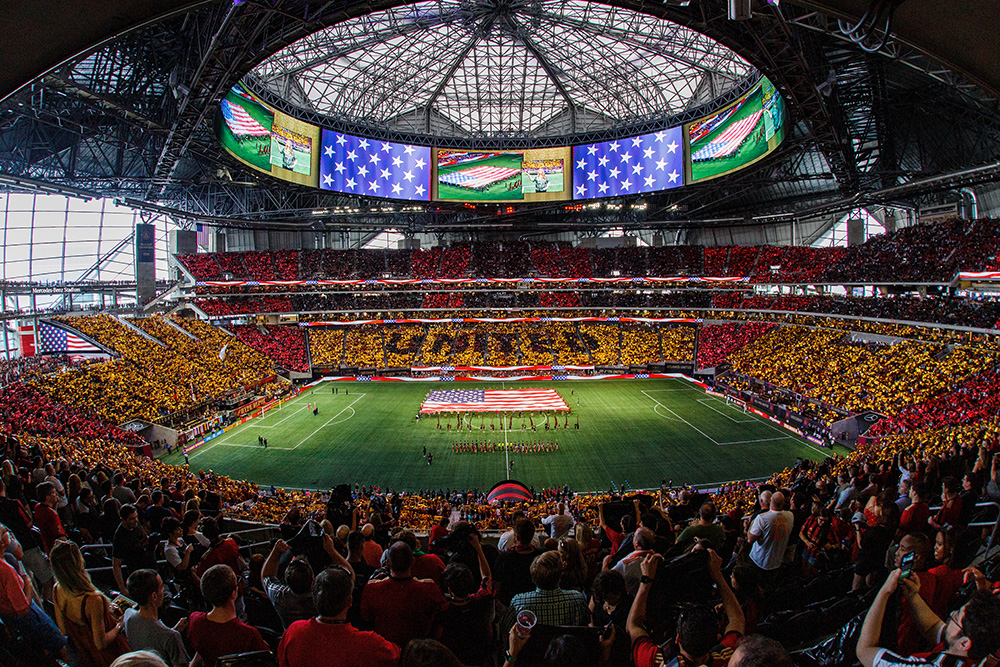
Atlanta United fans fill the vast Mercedes-Benz Stadium
After Inter Miami and Nashville this year and Charlotte and Austin in 2021, Sacramento and St Louis will join in 2022.
MLS will then pull up the drawbridge after a fast period of growth.
It could be a defining moment.
MLS’ toughest critics claim expansion fees alone are keeping the league afloat and believe that it will collapse when it stops adding teams.
It is a question that league executives are well versed in addressing.
“We look at expansion as a strategic opportunity to increase the scale of the league, the footprint and the fanbase. We do not look at it from a fees’ perspective,” Abbott says.
“For every sport organisation, media revenue is an important piece of the revenue stream. In the next run of negotiations increasing what that contribution is, is important. We continue to make significant investment in all aspects of our business.”
Courtemanche adds: “Expansion is not something where our owners have said we need fees to provides revenues to increase our profits. They remain in investment mode.
“Some teams are profitable. We have the salary cap but also the Designated Player Rule. If they spent what was required, i.e. stayed in the salary budget, nearly everybody would be profitable, but they’re not because of their desire to spend on facilities and players and academies. That investment is going to impact profitability but the enterprise value will continue to increase. The growth in expansion fees is a clear indication the overall value of the league has increased.”
Since stepping down from the US Soccer presidency in early 2018, Gulati has been able to focus more of his time at New York City’s prestigious Colombia University, where he is an economics professor.
His expert take on the business model?
“There’s two different drivers,” Gulati tells Sportcal Insight. “Firstly, as new teams come in there are revenues [through the franchise fee] for existing investors. Secondly, there is asset appreciation and that is not tied to the number of teams coming in.
“If you have a business that is cash neutral but the asset value is going up, then you have a good model. So that is where the sponsorship and media value will come in.”
“MLS will enjoy its most comprehensive US broadcast network schedule in season 25, with a record 46 network broadcast windows across ABC, Fox and Univision in USA, complemented by eight matches broadcast on CTV in Canada.”
From 2022, all of MLS’ media rights come up for renewal, with the league’s eight-year national agreements with ESPN, Fox Sports and Univision Deportes, the Spanish-language network, worth around $90 million annually, and an international rights deal with the IMG agency worth $7 million per season all expiring.
The next cycle is vital to the league’s future.
“I am tremendously bullish on the value of our rights in our next set of negotiations,” Abbott says. “In a world of disruption, which every sports league is dealing with, premium content will take on ever increasing value, and that is what we are.”
Rothenberg, who went onto found Premier Partnerships, the sponsorship sales and consultancy that now works with United Soccer League, the second-tier, adds: “The discussion about media rights is important. There is not a league in any sport that does not depend on media rights as the real financial lifeblood.
“In the early years right up to today all the media dollars were helpful but exposure was more important. I expect under Don Garber’s leadership that MLS will have huge increases in total media rights revenues.
“The prime priority for any media platform is live entertainment: sport is it. While the NFL dominates, the top 100 rated shows every year are overwhelmingly sports events. Media companies are vying hard for rights.”
MLS will enjoy its most comprehensive US broadcast network schedule in season 25, with a record 46 network broadcast windows across ABC, Fox and Univision in USA, complemented by eight matches broadcast on CTV in Canada. Back in 2015, that same quartet did not broadcast a single MLS game.
Courtemanche says: “Our goal is to be among the top leagues in the world. I think we already are when it comes to stadia, ownership, sponsorship and marketing. On the field the standards are getting higher and higher every year.”
Through a change in recruitment policy, MLS is finally shedding the stigma of being a retirement league, where Europe’s [past their] best head for one final payday.
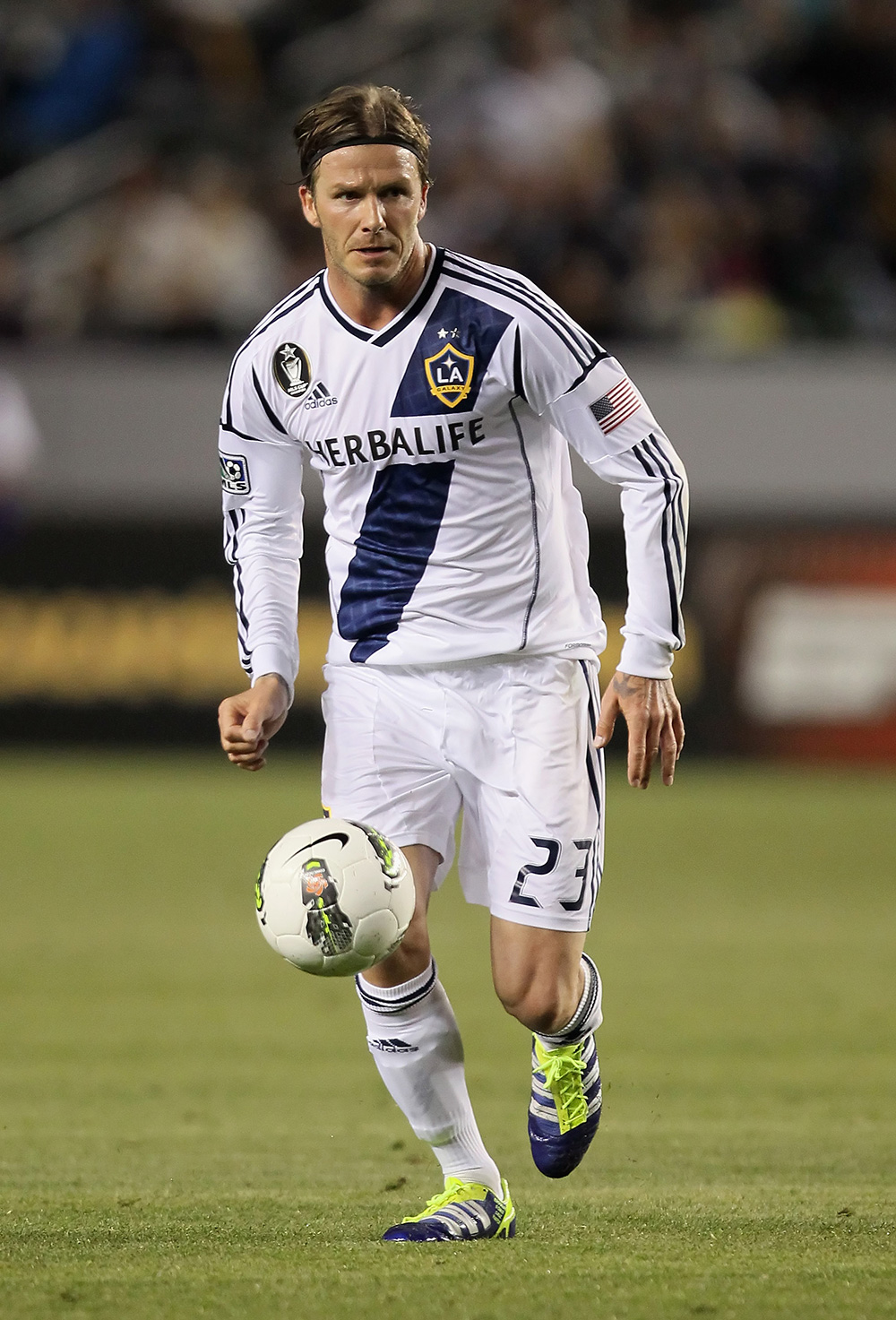
The league’s ‘wow’ moment. David Beckham joined LA Galaxy in 2007 and spent six seasons in MLS. He returns as a team owner with Inter Miami this year
David Beckham was 31 when he made the move from Real Madrid to LA Galaxy in 2007. It was a signing made possible by the establishment of the Designated Player Rule – nicknamed the Beckham Rule – which allowed teams to sign up to three players outside of the salary cap.
It was, key executives agree, a seismic moment for the league.
Courtemanche calls it the “iconic milestone” in the league’s history. A signing that “certainly sent a message to the global soccer community that MLS was serious, that iconic players were serious about making MLS their league of choice.”
For Gulati, it was the “breakthrough moment” with Beckham, who returns to the league this year in an ownership capacity with Inter Miami, giving MLS “notoriety beyond the sports landscape.”
It also kick-started a spate of big-name entrants into MLS - World Cup winners Andrea Pirlo, Thierry Henry and David Villa, English Premier League greats Steven Gerrard, Wayne Rooney and Frank Lampard and the cult figure that is Zlatan Ibrahimovic all headed stateside in their 30s.
“We have seen a dramatic change in the average age of designated players coming into the league, it’s now 25 down from 31 when Beckham came.”
Dan Courtemanche, MLS executive vice-president of communications
The recruitment plan was, in essence, pre-determined, with MLS having commissioned a study in 2006 that found fans wanted to watch iconic names in the flesh.
Ten years later another study, from the Boston Consulting Group, found fans wanted exciting, dynamic players, regardless of their name, their nationality and their trophy cabinets.
“It was a significant change in strategy of players coming into MLS,” Courtemanche explains. “We have seen a dramatic change in the average age of designated players coming into the league, it’s now 25 down from 31 when Beckham came. Some may go and make a career in Europe, like Miguel Almiron did [he moved from Atlanta to Newcastle of the Premier League for £21 million in January 2019, a league record transfer fee], some will stay in MLS.”
Abbott adds: “We are seeing an influx of young players coming in to the league now from across the Americas and seeing how competitive it is, how high the standard of play is.”
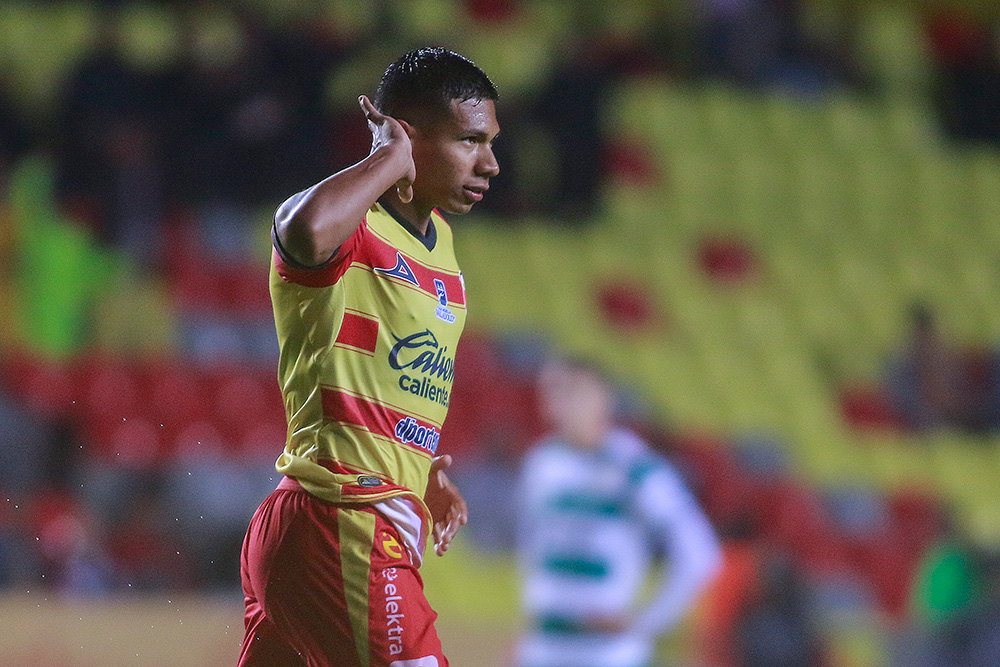
Players are now joining MLS in their prime, like Peru international Edison Flores. The 25-year-old has joined DC United from Mexico’s Monarcas Morelia
With the 2026 Fifa World Cup on the horizon – USA will host the bulk of the games, with assistance from Canada and Mexico – the growth curve is expected to continue unchecked.
“We have a saying here, ‘The League of Choice’,” Abbott says. “We want people whatever constituency they are to choose us. 2026 is a further opportunity for us to demonstrate to those constituents why we are the league of choice. Players will see opportunities here, fan interest will grow and commercial interest will increase."
That World Cup bid was led by John Kristick, the experienced US sports executive, who now works alongside Rothenberg as president of Premier Partnerships.
A former chief executive of ESP Properties, the global agency brand of advertising giant WPP, Kristick predicts a rosy commercial future for the league – one that “every marketing executive should consider” - so long as it meets the competitive challenge head-on.
“As MLS continues to compete for share of mind of consumers in a hugely competitive marketplace for sports and entertainment, the league must continue to inspire and engage fans,” Kristick explains.
“Fortunately, the soccer demographic is hot and only getting hotter as many from this generation of fans shifts into a higher earning stage of their lives. On the flip side, this appealing demographic is smart and sophisticated when it comes to soccer, and have almost unlimited options at their disposal to access the very best international soccer 24/7 across every imaginable viewing and social media platform.
“This presents a competitive landscape that most professional sports do not face in their domestic markets, and challenges MLS to work even harder to carve out its place in the hearts and minds of fans for generations to come. The growing presence of other soccer leagues and divisions in the US and Canada – such as the USL, NWSL, and Canadian Premier League – introduces yet another dynamic of competition that MLS must contend with.”
“And there’s still room for growth… MLS will become part of the fabric of American society. It will come to be part of Apple Pie and all that.”
Sunil Gulati, former President of the United States Soccer Federation
MLS will be 31 by the time the 2026 World Cup kicks-off, not a notable birthday by any means, but for those around when the league was merely an idea sketched on paper, it will be a considerable cause for celebration.
“There is a great symmetry,” says Abbott. “We built the league out of 1994. 2026 will be an opportunity for the world to see where soccer has come in North America. It will be a chance to really highlight and celebrate what the league has done, and how it is emerging as one of the top leagues in the world.”
Gulati adds: “1994 was the launchpad. 2026 can be the second half.
“Did I think the league would make it? I hoped so. Twenty-five years ago would I have taken what it has become now? In a heartbeat. You dreamt about it.
“And there’s still room for growth… MLS will become part of the fabric of American society. It will come to be part of Apple Pie and all that.”
MLS TIMELINE
1993
17 December: Alan Rothenberg presents the framework for new league and unveils the logo in an event held in Las Vegas in conjunction with the World Cup final draw.
1994
March: ESPN and ABC sign league’s first TV rights deals
June: Budweiser becomes first official sponsor
November:Doug Logan appointed as first MLS commissioner, president and chief executive.
1996
April: MLS launches with 10 teams: Colorado Rapids, Columbus Crew, DC United, Dallas Burn (now FC Dallas), Kansas City Wiz (now Sporting KC), LA Galaxy, New England Revolution, NY/NJ MetroStars (now New York Red Bulls), San Jose Clash (now Earthquakes) and Tampa Bay Mutiny.
1997
October:ABC and ESPN agree new six-year TV deal through the 2003 season.
1998
April: Chicago Fire and Miami Fusion join MLS
1999
May:Columbus Crew opens first soccer-specific stadium in USA.
August:Don Garber replaces Logan as MLS commissioner.
2002
January: ABC and ESPN sign new five-year rights deals for MLS, 2002 and 2006 Fifa World Cups and 2003 Women’s World Cup.
Tampa Bay and Miami franchises cease operation.
March:Soccer United Marketing is launched as commercial arm of MLS to manage sales, service and broadcast production for the league and US English-language World Cup properties.
2003
April: Fox Sports signs four-year rights deal with MLS.
2005
April: First expansion since 1998, as Real Salt Lake and CD Chivas USA debut.
2006
April: Houston Dynamo join MLS, with the franchise having relocated from San Jose only four months earlier (San Jose keeps Earthquakes name).
July: Fox and SUM agree to a five-year, $11 million rights deal.
August: ESPN and SUM announce an eight-year, $64 million rights agreement through the 2014 season.
September:The league says it will begin placing ads on the fronts of player jerseys from 2007
2007
January: David Beckham announces plans to join the LA Galaxy, signing a five-year, $250 million deal.
MLS passes ‘Designated Player Rule’, freeing up pressure on salary cap to attract top international players.
April: Toronto FC becomes first Canadian franchise.
2008
April: San Jose Earthquakes return to MLS.
December: MP & Silva becomes international rights distributor of MLS, paying $2 million per season.
2009
March: Seattle Sounders join
2010
March: Philadelphia Union join
2011
March: Portland Timbers and Vancouver Whitecaps debut
August: MLS signs $30m, three-year rights deal with NBC
2012
January: Private equity firm Providence buys 25 per cent stake in SUM for $150 million.
March: Montreal Impact become third MLS franchise in Canada.
2013
MLS introduces Rivalry Week’ – games between local teams.
2014
May:ESPN and Fox sign eight-year rights deals worth combined $75 million a year for English-language rights to MLS and US Soccer matches. Univision’s Spanish-language deal averages $15 million per year.
October: Chivas USA franchise shuts down.
2015
Jan: IMG succeeds MP & Silva as international rights distributor in eight-year deal, worth $7 million per year.
Heineken becomes MLS beer sponsor, ending inaugural commercial partner Budweiser’s 20-year role
March: New York City and Orlando City SC join, taking MLS to 20 teams.
2017
March: Minnesota United and Atlanta United debut
June: MLS takes back full control of SUM, buying out Providence
2018
March: Los Angeles FC join MLS
2019
February: Garber renews commissioner contract to 2023
March: FC Cincinnati begin play
June: MLS permits jersey and stadium naming rights sponsorship deals with alcohol spirits and gambling companies for first time
2020
Sleeve patch and international sponsorship sales permitted for first time
February: Earliest start to MLS season; Inter Miami and Nashville SC debut
2021
Austin FC and Charlotte to join
2022
St Louis and Sacramento Republic to take MLS to 30 teams